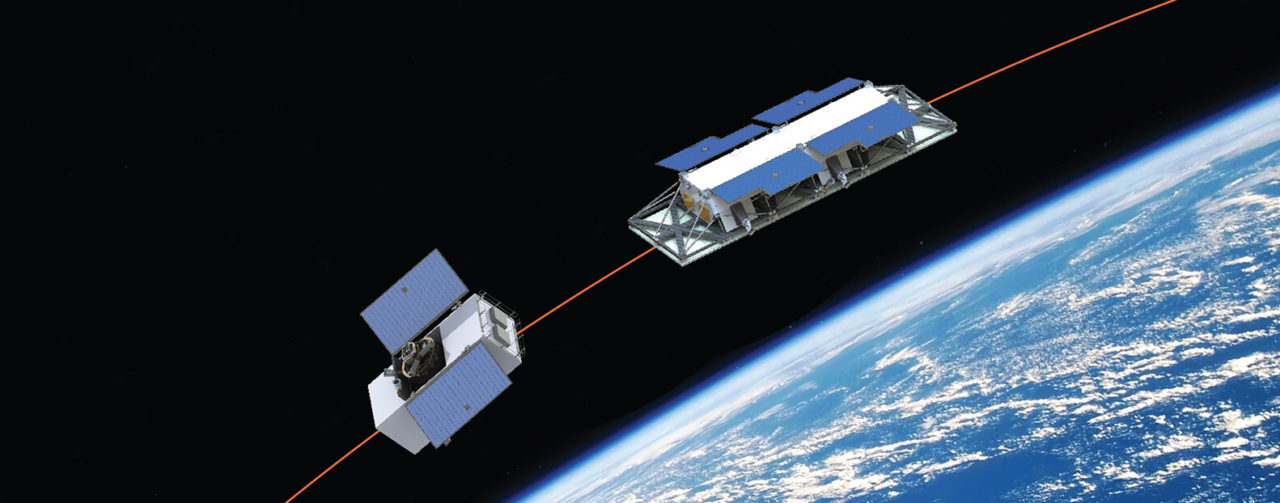Latest News

Rendition of two satellites in the OptiSAR constellation. Photo: UrtheCast.
UrtheCast has entered into a contract with an unnamed customer for the development and delivery of a dual-frequency stand-alone Synthetic Aperture Radar (SAR) operational-class satellite. While UrtheCast did not release the exact value of the contract, the company confirmed it is valued at more than CA$100 million ($78 million).
The contract is for the delivery of the SAR spacecraft, key elements of the ground segment — namely the mission control and planning system and the SAR processor — and in-orbit operations support, but does not include the price of the launch or insurance, which are the customer’s responsibilities, UrtheCast stated. This same customer has previously signed a Memorandum of Understanding (MOU) with UrtheCast for the OptiSAR Constellation.
UrtheCast expects work on the program to begin in early 2018 for launch in late 2020. As part of the deliverables under the contract, UrtheCast has also agreed to provide elements of the satellite ground segment and post-launch maintenance and operational support, each to be further detailed and extended in separate definitive contracts.
Using the same SAR technology that UrtheCast has been developing for the OptiSAR constellation, this contract will allow UrtheCast to accelerate both the operationalization of its SAR technology and the start of its SAR data services business, the company stated. The contract enables UrtheCast to build and launch a SAR satellite as a precursor mission to the OptiSAR constellation and to thereby demonstrate its high-capacity, high-throughput class capability with a range of imaging modes and scientific-grade data quality.
Under the contract, the two companies have agreed to enter into a separate definitive contract to provide UrtheCast with the exclusive commercial distribution rights to the customer’s unused satellite imaging capacity outside specified regions on a shared 50/50 net revenue basis, allowing UrtheCast to sell the SAR-XL data and SAR-derived services in advance of the deployment of the OptiSAR constellation — the date of which is now pushed out by at least a year.
With six independent apertures, this SAR satellite is expected to be the first to fly more than two independent apertures. Having six apertures will provide several advantages, UrtheCast said, including improved data quality and spotlight-class higher resolution in full stripmap mode, which enables more coverage capability at high resolution than is currently commercially available.
UrtheCast also disclosed that the OptiSAR technology, which is now in its third design iteration, could be configured in future missions to image simultaneously in three bands (for example, X, S, and L).
Get the latest Via Satellite news!
Subscribe Now